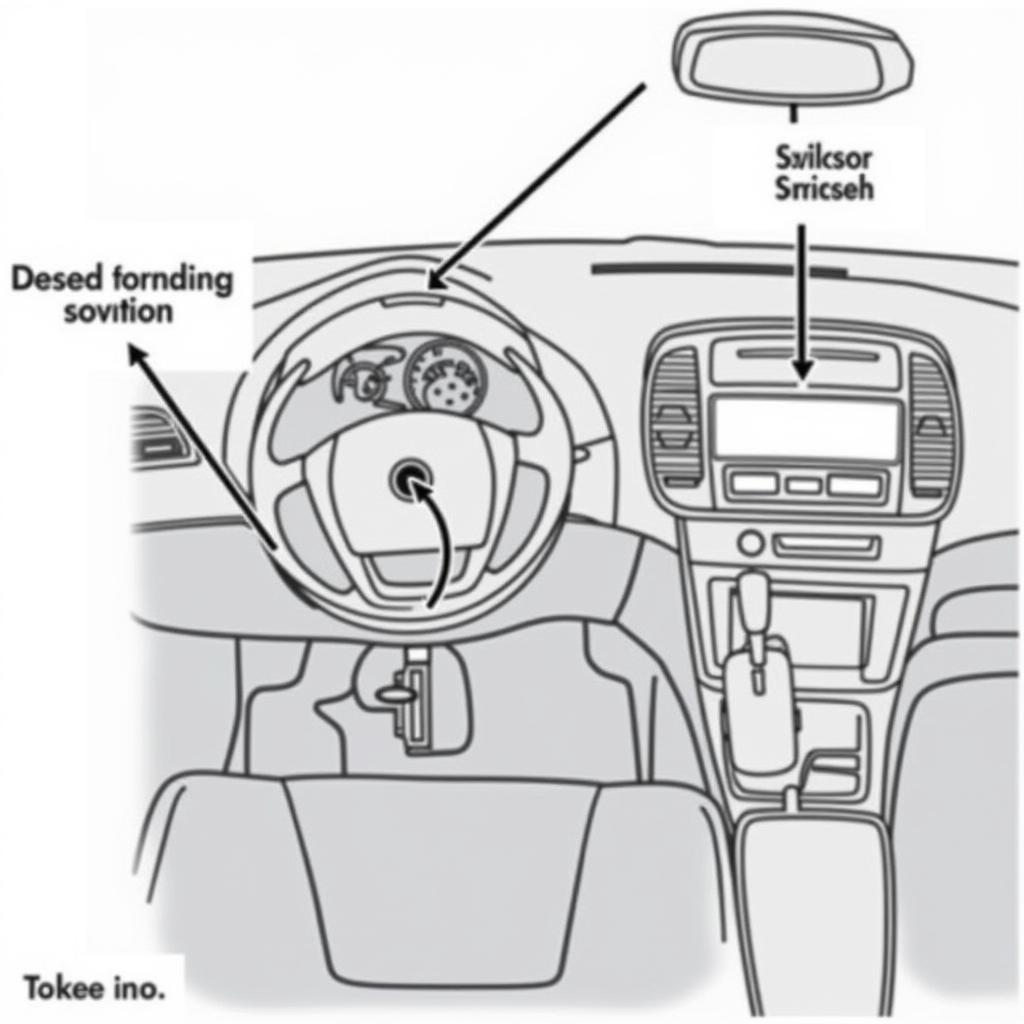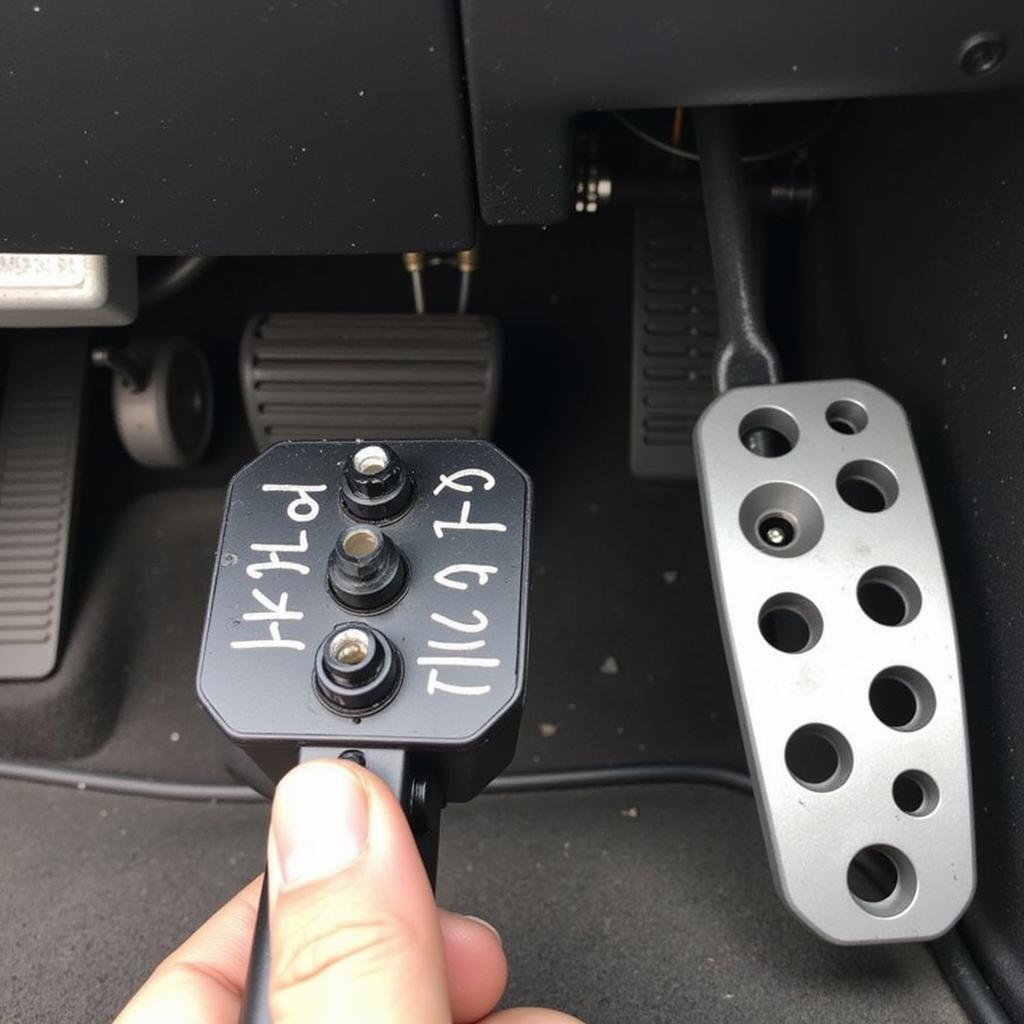The dreaded illumination of the ABS and VSC warning lights on your 2008 Prius can be a real headache. This issue often points to a faulty brake switch, a relatively inexpensive part that plays a critical role in your car’s safety systems. This article will guide you through diagnosing and potentially fixing the 2008 prius abs vsc warning light brake switch issue, empowering you to take control and potentially save on costly repairs.
Understanding the 2008 Prius ABS and VSC Systems
The Anti-lock Braking System (ABS) and Vehicle Stability Control (VSC) are vital safety features in your 2008 Prius. ABS prevents wheel lockup during hard braking, while VSC helps maintain control during slippery conditions. Both systems rely heavily on input from the brake switch. A malfunctioning brake switch can disrupt these systems, triggering the warning lights and potentially compromising your safety.
Why the Brake Switch is Often the Culprit
The brake switch is a small but crucial component located behind the brake pedal. Its job is to signal to the car’s computer when the brake pedal is pressed. Over time, this switch can wear out, become misaligned, or simply fail. Since the 2008 Prius brake switch plays a critical role in both the ABS and VSC systems, a faulty switch can trigger both warning lights simultaneously. This is often the most common and easiest to fix cause of this particular issue.
 2008 Prius Brake Switch Location: Diagram showing the brake switch position behind the brake pedal
2008 Prius Brake Switch Location: Diagram showing the brake switch position behind the brake pedal
Diagnosing a Faulty Brake Switch in Your 2008 Prius
Before rushing to replace the brake switch, it’s essential to confirm it’s the actual problem. Start by checking for other potential causes, such as low brake fluid or worn brake pads. If those check out, a simple test involves pressing and releasing the brake pedal repeatedly while observing the warning lights. If the lights flicker or change intensity, it strongly suggests a faulty brake switch. You can also use an OBD-II scanner to check for specific error codes related to the brake switch.
Using an OBD-II Scanner for 2008 Prius ABS VSC Warning Light Diagnosis
An OBD-II scanner can provide valuable insight into the issue. Plug the scanner into your car’s diagnostic port (usually located under the dashboard) and read the codes. Specific codes related to the brake switch, such as C1241, will confirm the diagnosis.
Replacing the 2008 Prius Brake Switch: A Step-by-Step Guide
Replacing the brake switch is a relatively straightforward process that many car owners can handle themselves. Here’s a simplified guide:
- Locate the brake switch: It’s behind the brake pedal.
- Disconnect the electrical connector: Carefully unplug the connector from the switch.
- Remove the switch: Typically, there’s a clip or button to release it.
- Install the new switch: Reverse the removal process.
- Reconnect the electrical connector: Make sure it’s securely attached.
- Test the brakes: Ensure the warning lights are off and the brakes function correctly.
This process might vary slightly depending on your specific Prius model. Always consult your owner’s manual for detailed instructions.
What if the Lights are Still On After Replacing the Switch?
If the warning lights persist even after replacing the brake switch, there could be other underlying issues within the ABS or VSC system. In such cases, it’s crucial to consult a qualified mechanic for further diagnosis and repair.
 Installing a New Brake Switch in a 2008 Prius
Installing a New Brake Switch in a 2008 Prius
Conclusion
Addressing the 2008 prius abs vsc warning light brake switch problem is essential for maintaining your vehicle’s safety and performance. By understanding the function of the brake switch and following the diagnostic steps outlined in this article, you can often fix the problem yourself, saving time and money. Remember, safety is paramount. If you are unsure about any step, don’t hesitate to consult a professional mechanic.
